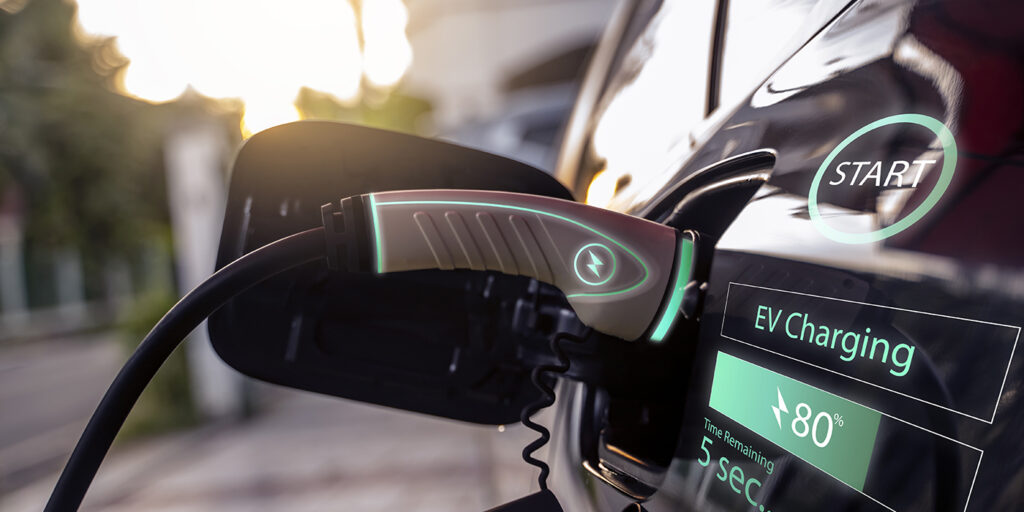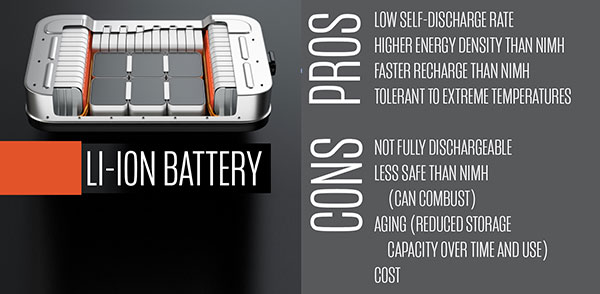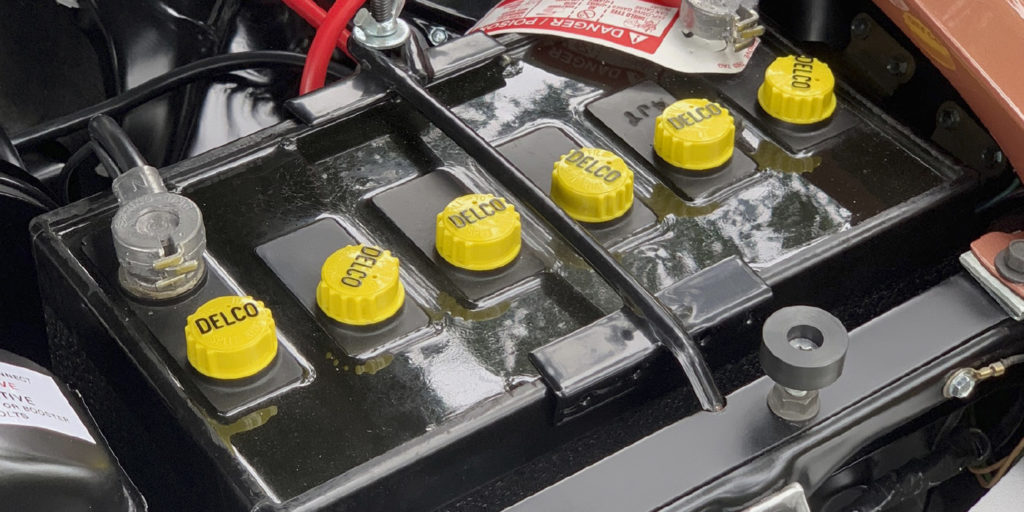In the world of electric vehicles (EVs), there are many components that work in unison to make the vehicles function. However, when you break it down to the basics, you have only two main components: the motor and the battery that provides electricity to operate it. In this article, we’re going to take a closer look at the battery.
History
The battery has been around for over 200 years, ever since Alessandro Volta created the voltaic pile. Since then, battery technology has been growing and advancing. Nickel and lithium-based batteries have allowed for smaller yet more powerful batteries. Although these modern batteries are fantastic, rest assured that the further advancement of battery design is not over.
Two Types
As far as HV batteries go, there are two main types used today: nickel-metal hydride (NiMH) and lithium-ion (Li-ion). NiMH batteries are an older technology than the Li-ion battery, but both allow for relatively good storage capacity in a reasonably-sized package. There are, of course, positives and negatives to each battery type (no pun intended).
Li-ion batteries are the champion in the category of weight and size. This is advantageous not only in the designing of the vehicle to accommodate the battery, but in the function of the EV. A lighter battery means less weight for the electric motor to propel, and in return a longer range before a recharge is needed.
Range is one of the biggest concerns of consumers when it comes to EVs. One of the easiest ways to increase range is to use a battery with greater storage capacity. This, however, means a larger and heavier battery, which in turn will increase the overall weight of the vehicle and reduce range due to this increased weight. In some cases, the HV battery can account for 25% of the car’s weight.
Massless Energy
One way to overcome this seemingly impossible tug of war over increased battery capacity and increased vehicle weight is to design the battery to actually be part of the vehicle structure instead of having it just be additional weight added to the structure. This is often referred to as “massless” energy storage, as the battery theoretically does not add mass or weight to the vehicle. For example, instead of mounting the battery to the floor of the vehicle, the battery is the floor of the vehicle. This concept is already being implemented by some EV makers.
The big obstacle with massless energy is making a battery that has both good electrical and mechanical properties. Making a battery that will not only withstand the energy from a collision and not rupture or otherwise be compromised but will also keep occupants safe inside the vehicle by maintaining the structural integrity is a lot to ask.
Having batteries that are more susceptible to collision damage will certainly bring new and unprecedented challenges to the collision repair industry.
Another idea is to incorporate battery cells into the vehicle body, which can be achieved by using a strong material such as carbon fiber. Using thin layers of carbon fiber as electrodes allows the battery to be shaped into a conventional fender, door or other body part, but will also store the energy to power the vehicle.
Having batteries that are more susceptible to collision damage will certainly bring new and unprecedented challenges to the collision repair industry, but these will undoubtedly be overcome. The industry has learned and adapted to other changes and advancements we’ve seen with automobiles, and it will do the same with batteries.
Processes and Procedures
As batteries become part of the structure of the vehicle, this will likely add new processes and procedures for replacing them. If the battery makes up a structural component of the vehicle, you can almost guarantee that the position of the battery and the installation process will be detailed and precise. Just like a procedure for a frame rail sectioning, the battery replacement OEM procedure will need to be followed to the letter.
Even with batteries that are not an integrated part of the vehicle structure, the process for removal and replacement can vary greatly and often requires precision and special tools. Some vehicles have connectors on the battery and the vehicle that are fixed. This means that they are not allowed to be flexed or moved around to assist in the connecting of the battery to the harness. Other vehicles have battery connectors that are able to be articulated to aid in the connecting of the battery.
Fixed Connectors
On a vehicle with fixed connectors, great precision is required to align the two ends of the connector perfectly to allow it to secure. If it’s even slightly off, the pressure from positioning the battery into place is enough to potentially damage the connector or the individual pins of the connector. The flexible connector reduces the chance of connector or pin damage as just the battery needs to accurately be put into place. One way automakers help ensure that the battery is correctly installed is by using alignment dowels to guide and properly locate the battery on the vehicle.
In addition to fixed connectors, some vehicles have battery cooling lines that are fixed as well. The same precision must be used when installing the battery so as to not damage the cooling line or an O-ring. Any damage could lead to a potential leak in the battery coolant. There is a good chance that the leak may occur right away, but the damage could be slight and a leak may take time to develop. Regardless, it is imperative that great care be used whenever removing or installing a battery, especially one with fixed electrical connectors or cooling lines.
It is imperative that great care be used whenever removing or installing a battery, especially one with fixed electrical connectors or cooling lines.
Removing and installing an HV battery is no small feat. Regardless of type, they are large and heavy. There is typically special equipment to support the battery and assist with this process. A scissor-lift platform or mobile battery table fixture is typically used. Depending on the procedure, the battery or the vehicle is raised or lowered to join the two.
Either way, precision is the key and special tools such as alignment dowels are often used. For fixed connectors, the use of a borescope may prove essential to visually verify the proper alignment of the connectors before mating the battery to the vehicle body.
In addition, there may be a specific bolt removal and installation sequence as well as torque specifications that must be followed, and some hardware may be one-time use only. Typically, there are connector covers or dummy plugs that are used to keep the battery connectors free from debris and to prevent damage.
Summary
Understanding the types of HV batteries used on today’s EVs, knowing the importance of following OEM procedures and precautions when removing and installing HV batteries, and recognizing that there are special tools and equipment required to perform these operations is important to ensure a complete, safe and quality repair.
This article is courtesy of BodyShop Business.















